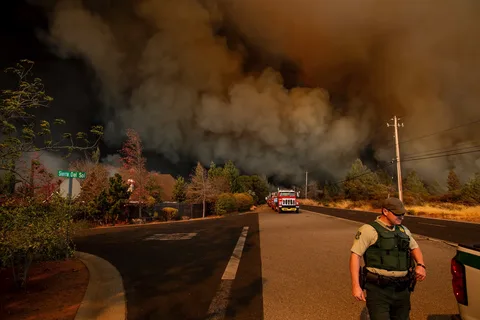In December 2017, Montecito, California, faced one of the largest wildfires in the state’s history—the Thomas Fire. Remarkably, despite the massive blaze consuming over 282,000 acres, Montecito managed to survive with only seven homes destroyed. This outcome was largely due to the town’s decades-long preparation and community efforts.
Maeve Juarez, a wildland fire specialist for the Montecito Fire Department, was on the frontlines as the Thomas Fire approached. Her team and the community had spent 30 years preparing for such an event. The town had implemented various preventive measures, from regular cleanup initiatives to fire-proofing homes, all of which contributed to their successful defense against the fire.
Montecito’s preparation began in 1994 when the Montecito Fire Department initiated a program aimed at wildfire risk mitigation. The strategy included clearing dried leaves, managing brush, and maintaining fire-resistant structures. This approach fostered a high level of community trust and collaboration, essential for quick and effective action when the fire hit.
On December 16, 2017, the fire’s flames were near Montecito. However, due to meticulous planning and the deployment of over 8,000 firefighters, including 130 engines and 30 crews, the town managed to stave off the worst. The fire’s peak intensity was met with strategic efforts to control spot fires and manage the blaze’s advance, leading to significantly lower damage than anticipated.
The success of Montecito’s fire defense strategy is attributed to several factors. The town had implemented a comprehensive evacuation plan, which ensured residents followed evacuation orders and allowed firefighters to work efficiently. The community’s longstanding commitment to fire preparedness and the availability of firefighting resources played crucial roles in their defense.
As climate change exacerbates wildfire risks, other communities can learn from Montecito’s example. Developing a unified wildfire mitigation strategy, starting with asset mapping to protect critical infrastructure, and ensuring comprehensive evacuation plans are vital steps. Communities should also focus on creating defensible spaces around properties and using fire-resistant materials to enhance individual preparedness.
Experts like Erica Fischer and Emily Troisi emphasize the importance of collaboration between land management agencies, governments, and homeowners to build effective wildfire defense strategies. While Montecito’s approach may not be a one-size-fits-all solution, its successful experience highlights the value of long-term planning and community engagement in wildfire preparedness.










